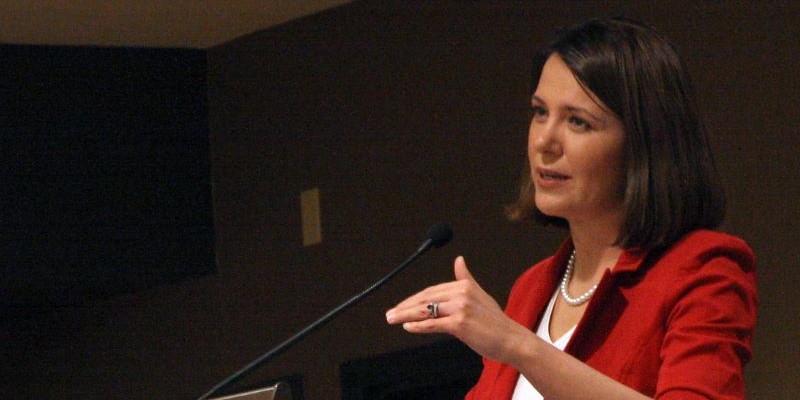Alberta government can also deliver cheques to residents

This fall in Saskatchewan, the Moe government plans to send $500 cheques to tax-filers in light of that province’s recent windfall in resource revenue. While this may seem like an attractive policy, the new Smith government should avoid the temptation to follow Saskatchewan’s lead. While Albertans should benefit from the province’s resources, there are better ways to make that happen, namely a savings fund for resource revenue.
In Alberta, resource revenue, which includes oil and gas royalties, remains a volatile source of revenue, helping fuel a familiar cycle. During times of relatively high resource prices, the government tends to run budget surpluses and increase spending. When resource prices inevitably decline, the province inevitably turns to deficits.
Consider the last commodity cycle. As resource revenue began increasing, Alberta’s per-person spending (adjusted for inflation, excluding debt interest costs) increased from $7,393 in 1998 to $13,114 by 2008. Once resource revenue declined, the province had to borrow money (i.e. incur deficits) to pay for spending that could only be sustained—without deficits—when resource revenues were high. These budget deficits resulted in a mass accumulation of debt, which Alberta taxpayers ultimately must finance.
Today, with the recent windfall, the Smith government should avoid falling into the same cycle and instead establish a fund to help prevent future deficits and pay cheques to residents—not once, but on an ongoing basis. To understand how exactly this would work, look to Alaska.
In 1976, the Alaska government created the Permanent Fund. (Alberta created the Heritage Fund the same year, although in 2019/20 it was valued at just $16.2 billion compared to $65.3 billion for the Alaska fund.)
According to Alaska’s constitution, the state government must deposit a set percentage of all mineral revenues into the fund each year, thus removing a portion of mineral revenue from the state budget, which tempers the pressure for increased spending during periods of relatively high mineral revenue. Also, a share of earnings from the fund must be set aside annually to offset the effects of inflation and ensure the real value of the fund is maintained. And crucially, a portion of the earnings from the fund are paid to Alaskan citizens directly as dividends (i.e. cheques), which is key to the fund’s success.
In Alaska, the annual dividend directly links the financial wellbeing of citizens (in the form of annual cash payments) to the performance of the fund. Put differently, because Alaskans have a direct financial interest in the fund, they’re more concerned about its independence, sustainability and investment performance than they otherwise would be, which creates a real constraint on government from taking actions (spending the savings, for example) that might compromise the fund’s performance.
The Alberta government should reinvigorate the Heritage Fund by learning from Alaska’s success. That means introducing a constitutional requirement for consistent contributions, inflation-proofing the fund, and paying annual dividends to Albertans. As Alaska has proven, it’s possible to prioritize fiscal stability and deliver ongoing cheques to residents.

